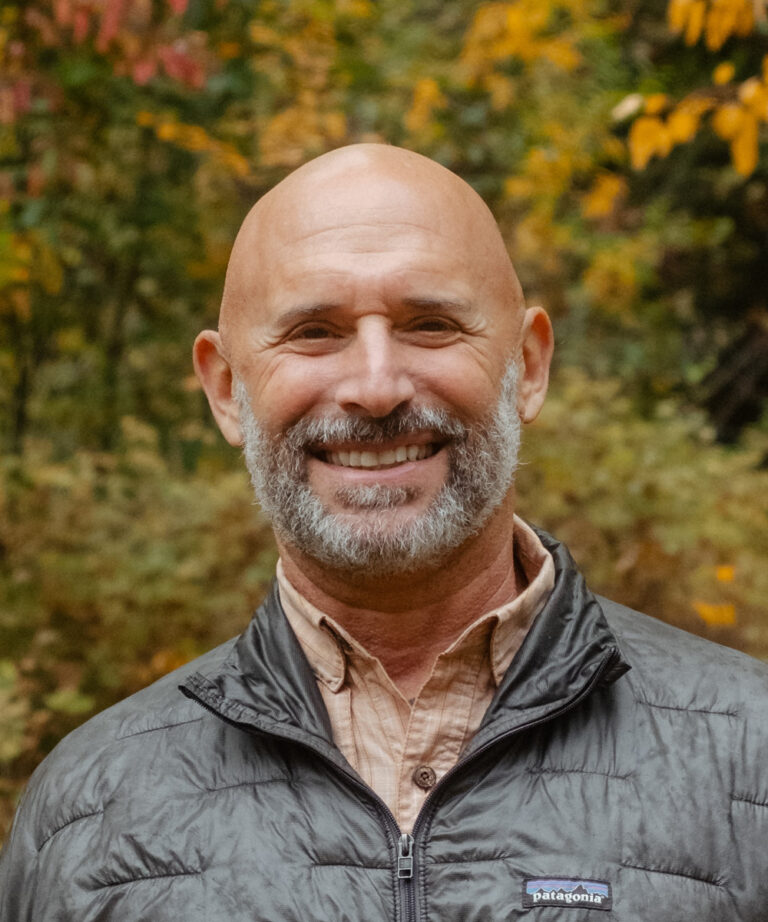The scene that greeted us in Joseph, Oregon, wasn’t the one we expected. Sure, the snowcapped peaks loomed over the quaint, old-timey storefront—vestiges of the town’s history as a timber and agriculture hub. But there were also cars—old, impossibly shiny cars—and lots of them.
It was the annual Oregon Mountain Cruise, and vintage cars were parked up and down the main drag. A quick, 5-minute gas fill up quickly turned into a leisurely tour of the show. Owners stood proudly by their vehicles, ready to chat with me about carburetors, exhaust fans, and other mechanical details that I pretended to know about. Although I’m not exactly a classic car aficionado, I was drawn in by the story behind each vehicle: Who originally bought it? What did they use it for? And what did it take to restore it?
The cars were compelling, but the mountains with craggy faces looked close enough to touch. We drove to the trailhead at Wallowa Lake and began the approach to our destination: the Matterhorn, a knobby lump of granite soaring 9,826 feet into the blue Oregon sky.
The trail took us to our campsite beside Ice Lake, whose waters (true to its name) were still covered in a patchy sheet of white halfway into June. Awaking early the next morning we set out, following a network of snowfields and rocky outcroppings to the saddle between the Matterhorn and its slightly taller neighbor, Sacajawea Peak. The route is steep, but it never gets technical, requiring the same skills you’d use chasing your 4-year-old through a jungle gym.
From the saddle, my companions and I turned south to head up the ridge to the summit. Tiny alpine wildflowers—blues, purples, and yellows—peaked their heads from cracks in the granite. As we climbed, we noticed wavy patterns chiseled into the rock by centuries of wind-driven sand. The formations looked more like something you’d find in a riverbed than at the top of mountain.
After three hours of scrambling, we made the summit. The view was breathtaking, stretching west across the snow-covered Wallowas and east to the sharp-toothed peaks of Idaho’s Seven Devils. To the north we could see the town of Enterprise, Oregon—home to Terminal Gravity Brewery. I gave the wind a couple attentive sniffs, and I swear I could smell the hops already.
The return hike down the West Fork of the Wallowa River went quickly, and before long we were seated at a table in the picnic-like atmosphere of the lawn at Terminal Gravity. The weather was perfectly mild, and children played in the small creek that ran through the property. Out came a round of Eagle Cap IPAs, and I was in heaven. Granted, I only ordered it because I had just been hiking in its namesake wilderness (I’m a sucker for that sort of thing), but the light, citrusy flavor and sharp hoppy finish really hit the spot after a long day in the hills.
Shortly thereafter, I lost myself in a delicious oozing mass of juicy meat, fresh tomatoes, and bleu cheese—otherwise known as a buffalo burger. Globs of ketchup and cheese dribbled from the ciabatta bun onto my fingers, mixing with the pine pitch and earthy Wallowa grit coating my hands. Call it disgusting, if you’d like. I prefer to think of it as a bit of terroir or a unique, local flavor.
Where to Stay in Wallowa County
There are free dispersed camping sites along Hurricane Creek and a developed campground with showers at Wallowa Lake State Park (from $20/night), both 10 minutes from Joseph. For those who prefer a more comfortable berth, the Bronze Antler Bed and Breakfast in Joseph (from $96/night) provides mountain views, evening desserts, and a library full of informational books on the area. For other lodging options, check out Wallowacountychamber.com.
Year-Round Adventure in Northeast Oregon
Summer in northeast Oregon is busiest, but come fall most of the trails clear out. Visitors are drawn to the 535 miles of trail in the Wallowas, as well as Chief Joseph Days Rodeo in late July. Joseph Canyon, approximately one hour north of Joseph and accessible from Highway 3, offers a good hiking alternative in the spring and fall when the mountain trails are choked with snow. In January, you can see mushers and dogs from all over the country test their mettle in the Eagle Cap Extreme Sled Dog Race, the only Iditarod qualifier in the western US.













